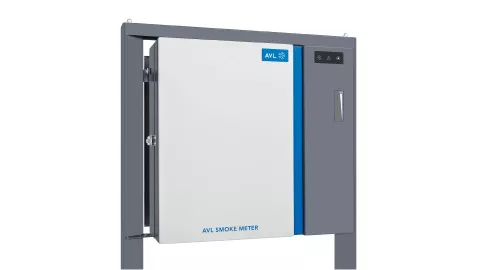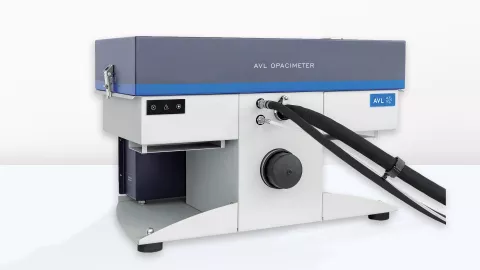The AVL Smoke Meter uses the filter paper method to determine filter smoke number (FSN defined according to ISO 10054) and soot concentration in mg/m3. The variable sampling volume and thermal conditioning of the exhaust gas ensures an extremely high reproducibility and a wide range of applications. This innovative tool can measure emissions in both large/heavy-duty engines as well as in smaller engines installed in passenger cars.
The main areas of application are for combustion optimization of prototype engines and emission monitoring up to the start of series production and thereafter. In addition, the instrument can perform soot or black carbon mass concentration measurements in raw exhaust gas (e.g. upstream of a DPF) in line with ISO 8178-3 standards. With its easy integration into an automation system and remote maintenance options, the AVL Smoke Meter reduces operating costs, service times and training periods.
| Technical Data | |
|
Measurement principle |
Filter paper blackening |
| Measured value output | FSN (filter smoke number), mg/m³ (soot concentration) |
| Measurement range | 0 to 10 FSN |
| Detection limit | 0.002 FSN or 0.02 mg/m³ |
Remaining Paper Indicator for Seamless Operation
The AVL Smoke Meter has a remaining filter paper indicator on the front of the housing. The light-emitting diodes indicate when the paper supply is low. This makes it easier for you to know when to replace the paper roll, for example, before a durability test.
Shop Air Purging
The AVL Smoke Meter can be equipped with a shop air purge option. The higher pressure compared to purging with the diaphragm pump has the key advantage of reducing particulate deposits in the device and in the sample lines.
Measurements of High and Low Soot Concentrations
Diesel particulate filters (DPF) are commonly used in modern engines. To determine their efficiency or detect any malfunctions, exhaust gas is sampled upstream and downstream of the DPF. Only one AVL Smoke Meter is needed to perform this measurement task. The use of two sample lines makes it possible to switch between two different sampling points.
Solution Sheet AVL Smoke Meter
DownloadExplore our emission analysis and measurement devices on AVL Experience Cloud. This interactive showroom offers future-proof automotive hardware solutions. Use AVL Experience Cloud to conveniently purchase our products:
- Explore the latest features
- Learn more about our devices and accessories
- Get one-on-one support from international success managers
- And much more
















